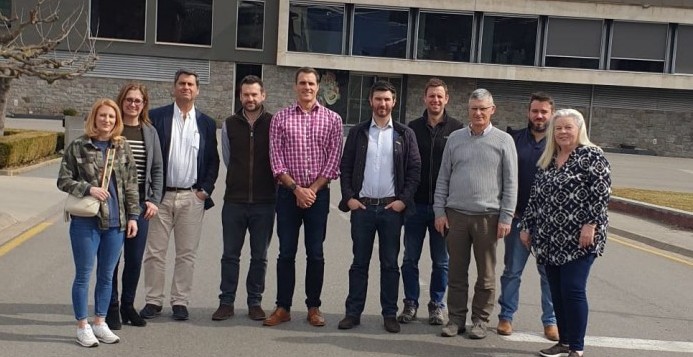NPA chief executive Lizzie Wilson discusses the fascinating insights a UK pig industry group gained from a trip to Spain, organised by ECO Animal Health.
I was fortunate enough to be taken on a study tour to Spain by ECO Animal Health at the beginning of March, along with a number of other producers and allied industry representatives.
It proved to be an eye-opening trip that I think we all walked away from with an entirely different perspective of the Spanish pig sector. Spain is dominated by five large cooperatives, consisting of not just producers, but also feed mills, processing and in one instance, a chain of own brand supermarkets too.
Only 8% of producers farm independently, whilst 62% are part of integrated supply chains and 30% are members of a cooperative.
The Spanish herd, now totalling 2.6 million sows, has increased consistently over the past few years – as other EU member states have headed in the opposite direction – to meet demand from their extremely buoyant export market. But it has suffered recently due to increased input costs, a fickle trading partner in China and a virulent new strain of PRRS.
Spain is now the third largest pig producer globally and has ambitions of producing 70 million pigs per annum (for which they already have slaughter capacity for); an increase of 10 million pigs. They’ve decided to cap production at that, due to environmental impact apparently.
The Chinese export market has been very positive for Spain, but it is, of course, volatile, and this is why Spain is now focusing on the EU market, to compensate for the reduction in EU supply. However, the industry slaughtered over 5 million fewer pigs than expected last year, and the year before and has therefore been buying pigs from where ever it can – Netherlands, Belgium, Denmark and France – to bolster supply.
Industry visits
We visited a large cooperative called Bon Area which produces, processes and packs everything that is then sold in their chain of stores across Spain, positioned similarly to the discounters within retail.
We then visited ARS Alendi, a feed mill that is also part of a cooperative, followed by a meeting with Dr Clemente Lopez on Spain’s Iberico pork sector.
We also visited Noel, a huge processor which supplies both Tesco and M&S with cured meat as well as the export market, and finally, the Costa family cooperative, the biggest pig producer in Spain, farming over 200,000 sows, which is on its way to being all adaptively farrowed, along with dynamic group sow gestation. Piglets are multi-suckled from around four days of age, whilst sows are confined for the initial three days.
Behind the Spanish curve
My take home message from this fascinating trip is that we’re effectively about five years behind their curve.
They suffer from all the same issues as we do – a lack of government support, welfare and environmental concerns, difficulties in building new units, the loss of zinc oxide and pressure on antibiotic use. But they have managed to proactively collaborate as a sector to facilitate entire supply chain solutions.
Their five large cooperatives sit down together in a room on a weekly basis to discuss a strategy that not only benefits their individual businesses interests, but the sector as a whole.
Their Iberico pork sector comprises more sows than our entire national herd and is produced indoors up until 100kg, at which point the finishers are then turned outdoors until 160kg to feed on acorns.
This, in particular, is where Spain has been clever as it’s presented as their ‘high welfare’ offering, but, because it is a specific product, it doesn’t compete directly with their indoor sector, which can then also claim higher welfare credentials to their advantage.
This contrasts with the UK, where we have voluntarily defined outdoor production as our ‘higher welfare’ benchmark, but because it is used for all the same products, it competes with our indoor sector, which is effectively downgraded in comparison.
There is so much we can learn from Spain – we just need to be more receptive to working together for the combined good of the sector, and more willing to do it for ourselves, on our own terms.
- Pictured: Lizzie, left, was part of a UK pig group that visited Spain for a few days in March.




